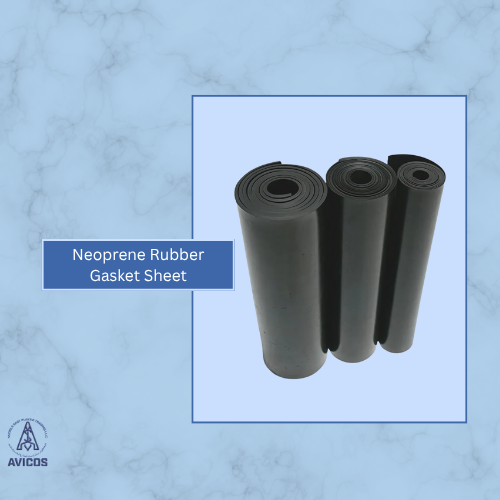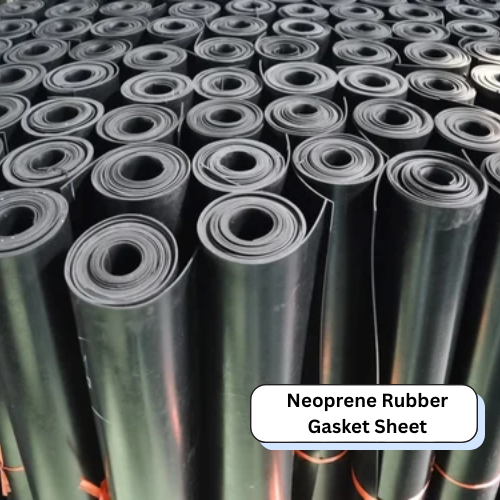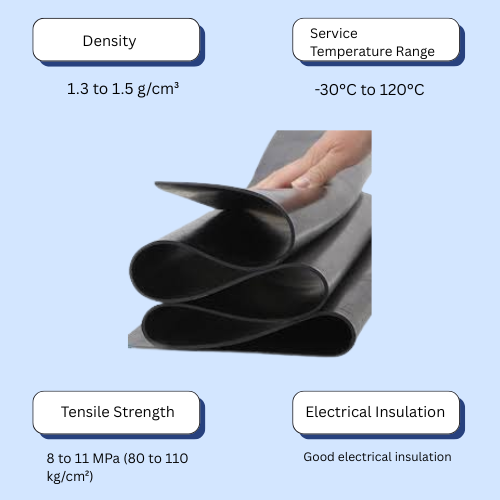What is a Neoprene Rubber Gasket Sheet?
Neoprene rubber gasket sheets are made from polychloroprene, a strong, flexible synthetic rubber used for seals, gaskets, and protective linings. They resist damage from oil, chemicals, weather, sunlight, and moderate heat, making them useful in many industries.
Neoprene sheets are also recognized for their durability, cushioning, and ability to withstand harsh environments. They work well in a wide temperature range and can be cut into different shapes and sizes. Due to these qualities, they are widely utilized in industrial, marine, automotive, and construction projects. This product description provides information about neoprene rubber gasket sheets, including their features, uses, technical details, and safety tips for proper use.
Features
These features make neoprene rubber sheets durable, flexible, and suitable for many sealing and gasket applications in industries like automotive, construction and marine.
- Excellent Compression Set Resistance: Neoprene maintains its shape and sealing force even after prolonged compression, ensuring long-lasting gasket performance.
- Oil and Fuel Resistant: It withstands exposure to fuels, oils, and lubricants, making it ideal for automotive and industrial sealing applications.
- Good UV and Ozone Resistance: Neoprene resists degradation from ultraviolet light and ozone, useful for outdoor and exposed environments.
- Temperature Range: It remains flexible and functional within a temperature range of approximately -40°C to 120°C, covering most industrial operating conditions.
- Resistance to Aging and Weathering: Neoprene sheets demonstrate excellent durability against aging, weathering, and environmental wear, extending gasket life.
- Adhesion to Metals: Its ability to bond well with metals facilitates strong, leak-proof sealing in assemblies and equipment.
- Wide Thickness and Customization Options: Available in diverse thicknesses and customizable dimensions to fit specific design requirements.
Applications
Neoprene rubber gasket sheets are used in many ways. They work as seals and gaskets to stop leakage in water pipes and oil pipes. They protect and line boats in marine environments. These sheets help seal and protect outdoor areas from weather damage.
They are also used as pads to reduce shaking and absorb shocks. In fridges, they provide electrical insulation and sealing. Additionally, neoprene sheets are made into floor mats, bumpers, and wipers. They are used in construction and vehicles to resist fire and chemicals. Neoprene offers cushioning, fills gaps, acts as a flame barrier, and is used for sealing LED lights. They help control shock and vibration and provide thermal insulation, making them useful in many industries.
How to Use?
A simple step-by-step process for using neoprene rubber gasket sheets:
- Measure the area where the gasket or seal will be placed.
- Pick the right thickness and size of neoprene sheet for your needs.
- Cut the neoprene sheet to the shape and size you want using scissors or a sharp knife.
- Clean the surface where you will put the gasket to remove dirt, oil, or moisture.
- Place the cut neoprene sheet on the surface, making sure it fits properly.
- If needed, apply adhesive or sealant to keep the gasket in place.
- Press firmly to attach the gasket securely.
- Check the seal after installation to ensure no leaks or gaps remain.
- Replace the gasket as needed if it shows signs of wear or damage.
Safety Guidelines
Follow such simple tips to help ensure safe handling and effective use of neoprene gasket sheets:
- Wear gloves for eye protection when handling neoprene sheets.
- Perform this in a well-ventilated area to avoid inhaling any fumes from adhesives or cutting.
- Keep the sheets far from open flames or high heat sources, as neoprene can be flammable.
- Be careful while cutting to avoid injuries.
- Clean the whole area before applying the gasket to ensure a proper seal.
- Avoid prolonged skin contact with adhesives or chemicals used during installation.
- Store neoprene sheets away from direct sunlight to keep them in good condition.
- Regularly check gaskets for wear, cracks, or damage to maintain safety.




